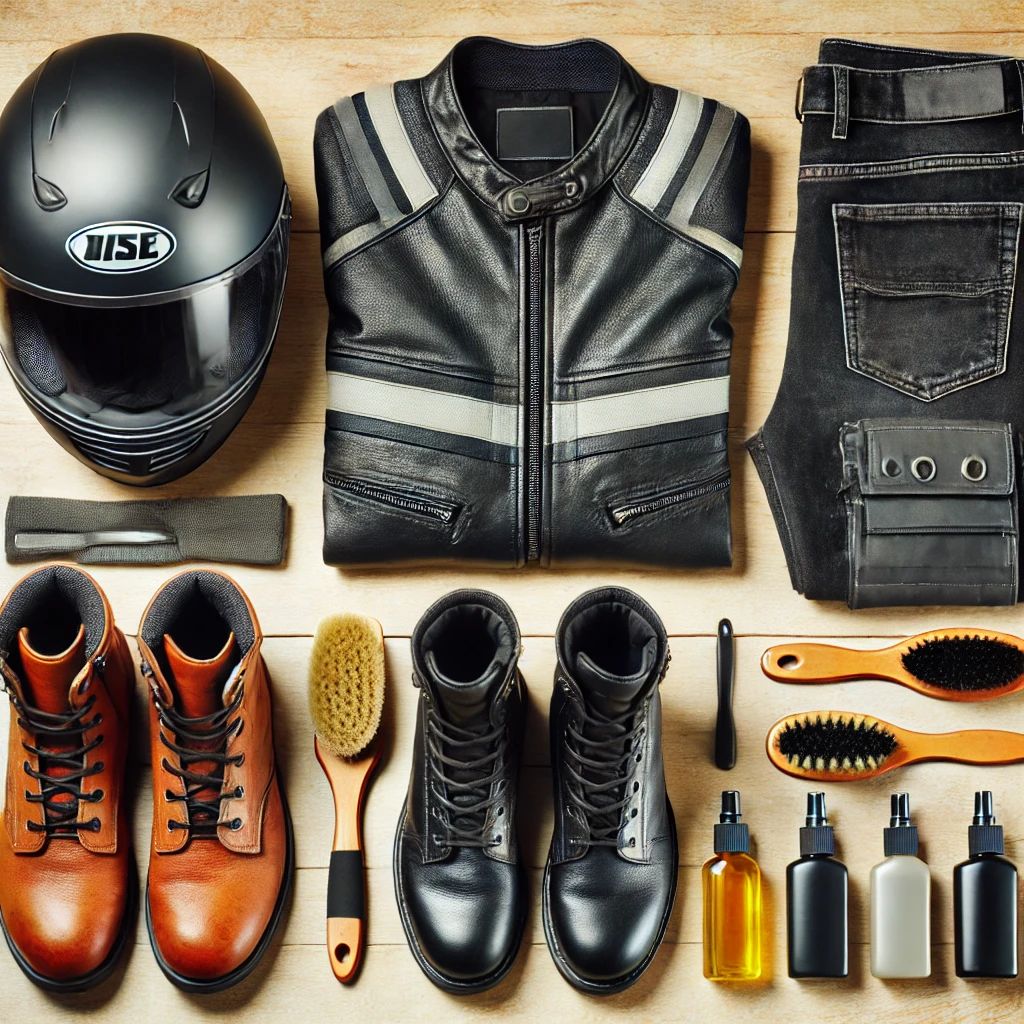Motorcycle riding gear is a significant investment for riders, offering essential protection, comfort, and style. But like any gear, it requires proper care to ensure it lasts and performs as expected. In this blog, we’ll dive into the best practices to maintain and extend the life of your motorcycle riding gear, from helmets to leather jackets, boots, and gloves.
Why Caring for Your Riding Gear Matters
Motorcycle riding gear isn’t just about looking good on the road. The quality of your gear directly impacts your safety. Leather jackets, protective pants, gloves, and helmets are all designed to shield you from harsh weather, road debris, and most importantly, accidents. Regular care prevents wear and tear, ensures maximum durability, and keeps the gear’s protective features intact.
Let’s explore some essential tips for maintaining different types of riding gear.
1. Helmet Care
Your helmet is perhaps the most crucial piece of riding gear. Here’s how to keep it in top shape:
Exterior Cleaning: Wipe down the outer shell with a microfiber cloth and mild soapy water. Avoid harsh chemicals as they may degrade the finish.
Interior Maintenance: The interior padding absorbs sweat and oils over time. Remove the liners if possible, and wash them according to the manufacturer’s guidelines.
Visor Maintenance: Clean the visor with a soft cloth to avoid scratches, and use anti-fog treatments if necessary.
2. Leather Jacket and Pants
Leather riding gear is durable, but it requires special care to keep it supple and protective.
Cleaning: Use a damp cloth to wipe off dirt. Avoid submerging leather in water as this can cause it to stiffen. For deeper cleans, use a leather-specific cleaner.
Conditioning: Regularly apply leather conditioner to keep the material flexible and prevent cracking. Make sure the conditioner is evenly distributed and let it dry naturally.
Waterproofing: While many leather items are pre-treated, reapplying waterproofing sprays can further protect your gear from rain and moisture.
3. Textile Riding Gear
For those who prefer textile jackets and pants, these garments are often easier to clean but still need proper care.
Machine Washing: Most textile gear can be machine washed. Use a gentle detergent, and always follow the manufacturer’s care instructions.
Waterproofing and Reproofing: Reapply water-repellent coatings every season to maintain the gear’s ability to protect you in wet conditions.
Zipper and Velcro Care: Regularly clean zippers and Velcro fasteners to ensure they remain functional.
4. Gloves
Your gloves take a lot of abuse, especially in harsh weather conditions.
Cleaning Leather Gloves: Use a damp cloth for surface dirt and a leather cleaner for deeper cleaning. Avoid soaking them in water.
Textile Gloves: These can usually be machine washed, but check the care label first. Always air dry your gloves to avoid shrinking.
Conditioning: If your gloves are made of leather, apply a small amount of conditioner to keep the material flexible and prevent cracking.
5. Boots
Motorcycle boots are designed to protect your feet and ankles, but they need regular care to remain effective.
Cleaning: Wipe down boots after every ride to remove dirt and debris. Use a stiff brush for soles.
Waterproofing: Reapply waterproofing treatments to keep your boots dry in wet weather.
Leather Boots: Like jackets, leather boots need conditioning to prevent drying and cracking.
6. Storage Tips for Your Motorcycle Gear
Proper storage is just as important as cleaning when it comes to extending the life of your gear. Here are a few tips:
Helmet: Store your helmet in a cool, dry place, away from direct sunlight to prevent damage to the materials.
Clothing: Hang jackets and pants on wide, padded hangers to maintain their shape. Avoid cramming your gear into tight spaces.
Boots and Gloves: Store them in a dry area with good ventilation. Using boot trees can help retain their shape.
7. Regular Inspection
Lastly, always inspect your gear for signs of wear and tear before each ride. Check for loose stitching, worn zippers, and any cracks or stiffness in leather. Timely repairs or replacements can ensure your gear stays safe and functional.
How to Properly Care for Your Motorcycle Riding Gear for Long-lasting Performance.

16
Oct
